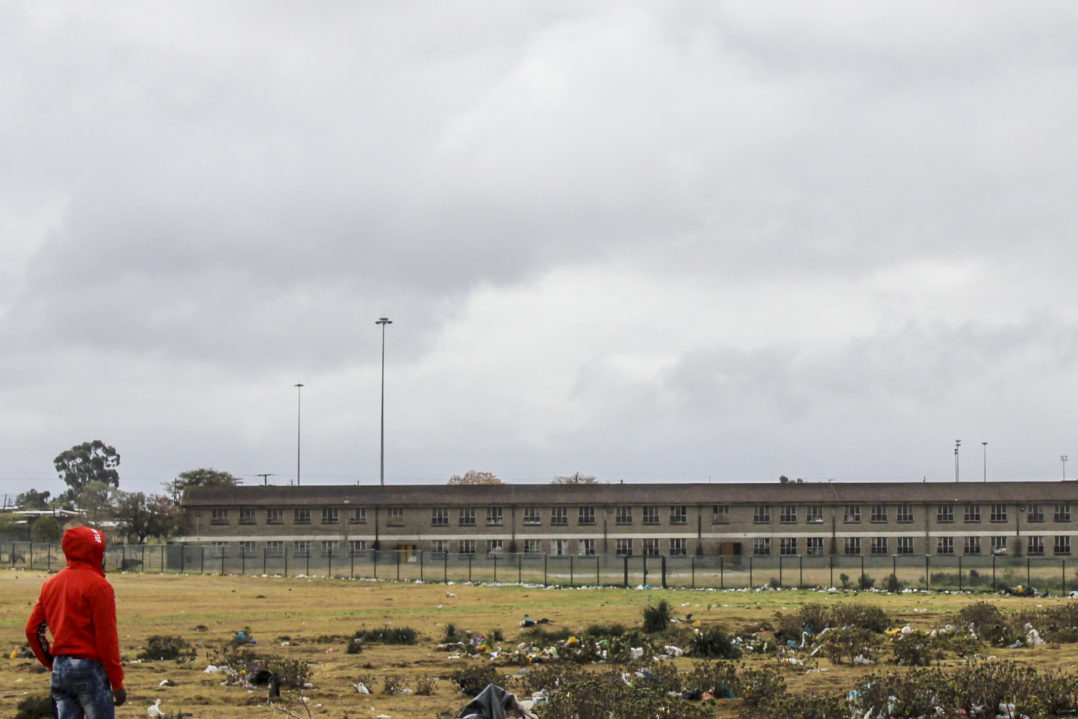By DR ASHLEY WESTAWAY, GADRA Education manager
The Makhanda Matric class of 2022 has delivered a generally very pleasing set of results in the NSC examinations. The news is not all good, but it’s mostly good. In this analysis of the public school results, I cover several essential performance indicators, including cohort size, retention rate, pass rate, number of Bachelor passes and the Bachelor pass rate.
At the onset, it should be noted that considering both percentages and numbers, as well as quantity and quality, is necessary to arrive at a balanced, comprehensive analysis. Too often in this country, there is a fixation with the percentage pass rate. This is obviously an important performance indicator, but it is only one of the numerous vital indicators.
Increased cohort size
The most logical starting point for an analysis of Matric results is the cohort size because it tells us about the functionality of the schooling system as a whole. It reveals the system’s effectiveness in laying adequate educational foundations, retaining learners and supporting their progression from one grade to the next. Up until two years ago, one of the most severe problems in Makhanda was an unacceptably high drop-out rate.
As can be gleaned from the table below, in the pre-2021 period, drop-out was above 50%. (Together, the retention and drop-out rates add up to 100%. Each learner is either retained in the system until Matric or they drop out of school before reaching Matric.) The past two years have seen dramatic, unprecedented improvements in learner retention. There has been a twenty percentage point improvement, from 45% in 2020 to 65% in 2022. Conversely, drop-out has decreased from 55% in 2020 to 35% in 2022. The significance of this can hardly be exaggerated because an educated population is an employable population.
A heroic effort from large no-fee paying schools
It would be remiss of me not to single out Nombulelo, Mary Waters and Ntsika as the three schools that enabled the much bigger cohort of 2022. Whilst the growth at Ntsika has been consistent, Nombulelo and Mary Waters had to grapple with considerable increases in Matriculant numbers in 2022. Given that all these schools have severe resource constraints, they deserve the most sincere thanks and praise for accommodating and supporting such large learner numbers.



There are both technical and substantive reasons for the massive retention gains. Two years ago, the Department of Basic Education terminated the counter-productive policy of modularisation, which effectively excluded weak academic candidates from the examination process. This has undoubtedly boosted Matric numbers in Makhanda and throughout the country.
Improved primary school performance
Substantively, I would suggest that the primary school sector in the city has improved over the past decade. If I am correct, this implies that stronger literacy and numeracy foundations are being built, enabling more significant numbers of learners to progress successfully to Matric. I would therefore like to acknowledge all of our 18 public primary schools and the support that Rhodes University and many NGOs give to the primary sector. The success and impact of these efforts are reflected in the much higher numbers of Matriculants.
Overall Performance Indicators for Makhanda Matric Performance:
| 2018 | 2019 | 2020 | 2021 | 2022 | |
| Cohort Size | 558 | 540 | 540 | 663 | 785 |
| Retention Rate | 47% | 45% | 45% | 55% | 65% |
| % Pass Rate | 78% | 76% | 80% | 83% | 85% |
| Number of Bachelors | 238 | 187 | 230 | 313 | 305 |
| % Bachelor Pass Rate | 43% | 35% | 43% | 47% | 39% |
When there is a dramatic increase in cohort size, this is sometimes accompanied by a decline in the pass rate because a fixed number of teachers is required to support a much larger number of learners. However, in the case of the Makhanda Class of 2022, the biggest-ever cohort achieved the highest-ever pass rate of 85%, up from the previous high of 83% reached in 2021.
This outstanding result consolidates Makhanda’s claim to be the leading educational city in the Province. The Eastern Cape pass rate for 2022 was 77%, and the top district was Alfred Nzo West, with a pass rate of 83%.
Two no-fee paying schools in the top three – for the first time
A school-by-school breakdown of performance is provided below. Again, Victoria Girls produced a perfect pass rate. Warren Schmidt and his team are to be commended for maintaining excellent educational standards at the school. The schools that took silver and bronze on the pass rate podium in 2022 were Khutliso Daniels (89%) and Nombulelo (88%).

This is the first time in the history of Makhanda that two of the top three positions are taken by no-fee schools. Radio Mcuba and Noluthando Mhlekwa are stalwarts of education in our city, and both fully deserve their success. The slide of Graeme College and PJ Olivier in 2022 are of concern. It is imperative for the sustainable success of public schooling that ALL fee-paying schools should consistently produce outstanding results. The overall city pass rate was boosted by the year-on-year improvements at Ntsika (83%), Mary Waters (81%), Nathaniel Nyaluza (75%) and TEM Mrwetyana (74%).
School-by-school breakdown of results
| Wrote 2018 | Passed 2018 | Wrote 2019 | Passed 2019 | Wrote 2020 | Passed 2020 | Wrote 2021 | Passed 2021 | Wrote 2022 | Passed 2022 | |
| Graeme College | 64 | 62 (97%) | 49 | 46 (94%) | 60 | 58 (97%) | 59 | 57 (97%) | 63 | 54 (86%) |
| Khutliso Daniels | 31 | 18 (58%) | 22 | 11 (50%) | 36 | 28 (78%) | 49 | 41 (84%) | 36 | 32 (89%) |
| Mary Waters | 62 | 51 (82%) | 116 | 84 (72%) | 61 | 47 (77%) | 119 | 93 (78%) | 160 | 130 (81%) |
| Nathaniel Nyaluza | 56 | 14 (25%) | 57 | 20 (35%) | 40 | 25 (63%) | 66 | 42 (64%) | 52 | 39 (75%) |
| Nombulelo | 127 | 101 (80%) | 100 | 79 (79%) | 89 | 62 (70%) | 85 | 73 (86%) | 182 | 159 (87%) |
| Ntsika | 93 | 79 (85%) | 87 | 67 (77%) | 104 | 88 (85%) | 136 | 108 (79%) | 145 | 120 (83%) |
| PJ Olivier | 30 | 25 (83%) | 20 | 20 (100%) | 29 | 28 (97%) | 41 | 35 (85%) | 27 | 21 (79%) |
| TEM Mrwetyana | 14 | 5 (36%) | 13 | 9 (69%) | 38 | 13 (34%) | 26 | 19 (73%) | 43 | 32 (74%) |
| Victoria Girls | 81 | 81 (100%) | 76 | 74 (97%) | 83 | 83 (100%) | 82 | 82 (100%) | 77 | 77 (100%) |
| City Total | 558 | 436 | 540 | 410 | 540 | 432 | 663 | 550 | 785 | 664 |
| City % pass rate | 78% (2018) | 76% (2019) | 80% (2020) | 83% (2021) | 85% (2022) |
The most important indicator of a quality pass is to obtain a Bachelor’s level pass since this enables students to apply for Bachelor’s Degree study at a tertiary institution. The class of 2022 could not match the feats of the Class of 2021 in this regard, but it came fairly close, at least in relation to the overall number of Bachelor passes. The 2022 total of 305 is credible, especially when one remembers that Makhanda had never produced more than 250 Bachelors before 2021. The primary reason for the excellent city performance at the top end is again the no-fee sector (as is the case with the pass rate).
An easy way to gauge the transformation of public education in Makhanda is to compare where the Bachelor passes came from in 2022 with where they came from in 2018. In 2018, 57% of the 238 Bachelors produced came from the three fee-paying schools, with the six no-fee schools contributing 43%. In 2022, the contribution of the no-fee schools skyrocketed to 66%. That is to say, 2 out of every 3 Bachelor passes in Makhanda in 2022 were produced by a no-fee school. And for the first time in the city’s history, a no-fee school (Nombulelo) had the highest number of Bachelor passes. Again, Noluthando Mhlekwa and her teaching staff should take a bow; 80 Bachelor passes is a tremendous accomplishment!
School-by-school Bachelor performance
| 2018 | 2019 | 2020 | 2021 | 2022 | |
| Graeme College | 46 (72%) | 25 (51%) | 41 (68%) | 37 (61%) | 26 (41%) |
| Khutliso Daniels | 5 (16%) | 1 (5%) | 10 (28%) | 25 (51%) | 15 (42%) |
| Mary Waters | 19 (31%) | 23 (20%) | 23 (38%) | 38 (32%) | 32 (20%) |
| Nathaniel Nyaluza | 8 (14%) | 6 (11%) | 3 (8%) | 12 (18%) | 13 (25%) |
| Nombulelo | 34 (27%) | 28 (28%) | 23 (26%) | 43 (51%) | 80 (44%) |
| Ntsika | 36 (39%) | 28 (32%) | 46 (44%) | 61 (45%) | 59 (41%) |
| PJ Olivier | 16 (53%) | 13 (65%) | 14 (48%) | 18 (44%) | 6 (22%) |
| TEM Mrwetyana | 0 (0%) | 0 (0%) | 3 (8%) | 4 (15%) | 3 (7%) |
| Victoria Girls | 74 (91%) | 63 (83%) | 67 (81%) | 75 (91%) | 71 (92%) |
| Total | 238 (43%) | 187 (35%) | 230 (43%) | 313 (47%) | 305 (39%) |
A sustained resuscitation of Makhanda’s public schooling
What the 2022 results show is that the sensational results of 2021 were not a flash in the pan. It can be confidently asserted that Makhanda is amidst a transformation and resuscitation of public schooling. Without question, we can state that the quality of education offered in the city, across the full range of public schools, is better now than it was a decade ago. Primary schools are laying stronger educational foundations, and high schools are delivering ever-increasing numbers of passes. Moreover, the quality of the Matric certificates is improving.
It’s now time for everyone in the city to rally around a bold new vision to establish Makhanda as the leading education city in the country. This is not beyond the realms of possibility. It will take an extraordinary collaborative effort, but it is most certainly achievable.
Education is Makhanda’s USP
Education has always been one of the city’s USPs (Unique Selling Points). This is a most opportune time for all stakeholder bodies and leaders to hone in on education as THE key local sector. The stars are aligned. Together, let’s capitalise on the unique opportunity that we have to put Makhanda at the centre of the educational map of South Africa.


